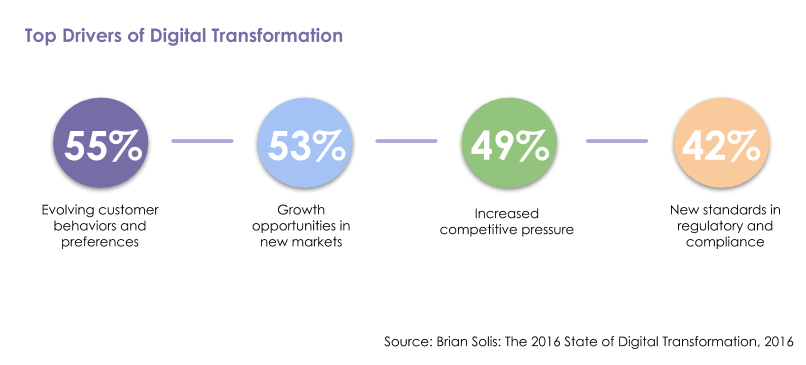Digitization, Digitalization, and Digital Transformation. For most of us, they seem to accomplish the same stuff, right? They take something that is not digital and turn them digital. Well, not exactly, but they do have one word in common “Digit” in their name.
Let’s start from the begging. When computers were first introduced, they were only able to do simple tasks, like calculating numbers or allowing us to use word processing applications. So where does this word “Digit” fit in the computer world? Well, a digit is a specific number in a context. Did you know that whatever we have stored on our computers from pictures, documents, movies, music, etc. is represented as binary numbers {0, 1}? Our computers utilize a binary number system where all files have a unique binary number {0101110100101 as an example} associated with them which translates into what we see on the screens today. These zeros and ones are a computer’s language to tell them what we want to see on our screens. So when you open a picture, the computer reads the binary number of that file and translates it into shapes and colors.
Now that we know the word “Digit” means to convert something into a binary system for a computer to read, what is the difference between these 3 terms?
Digitization is creating a digital version of something like a paper document. In other words, it’s converting something that was non-digital into a digital format that can be used in many ways by computers.
An example of digitization would be converting a paper document into an image or PDF document by scanning. This way the paper document can be viewed and shared in a computerized environment. Nowadays, there are plenty of applications that enable the conversion of scanned documents into editable and searchable files. This technology is called optical character recognition, or OCR shortly.
Digitalization is taking the digitized data and turning into actionable knowledge that is used to improving business operations.
A simple example of digitalization would be for a company to centralize customers’ data with an application that has the customer’s information and service history. This way the agent or a technician can be informed about prior issues and service resolutions for each specific customer. It is making all of this information available and accessible in one central location in digital format. In other words, digitalization is happening when a process is performed end-to-end in an electronic format.
Digital Transformation is re-inventing the way a company works. By inventing a digital transformation strategy companies are looking to make the most of their resources and maximize the efficiency by managing their daily operations utilizing business applications. Digital transformation also includes creating new business concepts, business activities, processes, and overhauling the entire business operation. In simple words, digital transformation utilizes digitization and digitalization data to strive toward continuous optimization across the company to help it succeed.
According to the latest study by Solis, customer experience is one of the top drivers of digital transformation. Even if IT and marketing teams do not fully understand their customer behavior, they influence technology investments. 53% of companies strive “growth opportunities in new markets” and see it as a driver to not only reach existing customers in a better way, but also open new market opportunities.

In his study, Solis shows who the key players in sponsoring and driving digital transformation are. CMO, CEO and CIO (54%, 42%, and 29% respectively) seem to be the decision maker when it comes to championing or sponsoring change in a company.

Example of Digital Transformation in the Field Service
Let’s think of digital transformation from an electrician’s point of view. Before digitization, the electrician would use the pre-printed forms to provide you with details regarding the work that was performed. Then the digitization arrived and these paper forms were converted into an image that was stored for record-keeping. Prior to digitalization, the electrician would have to view prior work orders for each customer by looking at the stored scanned images. With digitalization, all customers’ information is uploaded into a CRM system where the digital images and information is stored. The electrician can also print already pre-filled work order forms to take with him to the customer. Now, the digital transformation allows to take the data from both digitization and digitalization and turn into a field service solution where the electrician can view, update, manage, and share customer’s information on the go. The digital transformation took everything and created a new optimized solution that enabled the electrician to be mobile without a need to sit at front of the office computer and waste time looking up and writing down customers’ information.
All these terms accomplished something great that allows us as the businesses, customers, or users to perform tasks that prior to all this were time and cost consuming. So if you are still confused, or would like to talk about how your company can plan their digital transformation, we are here to help you answer any questions or transition from one step to another. Drop us a line or call us, we are more than happy to talk to you about your needs.